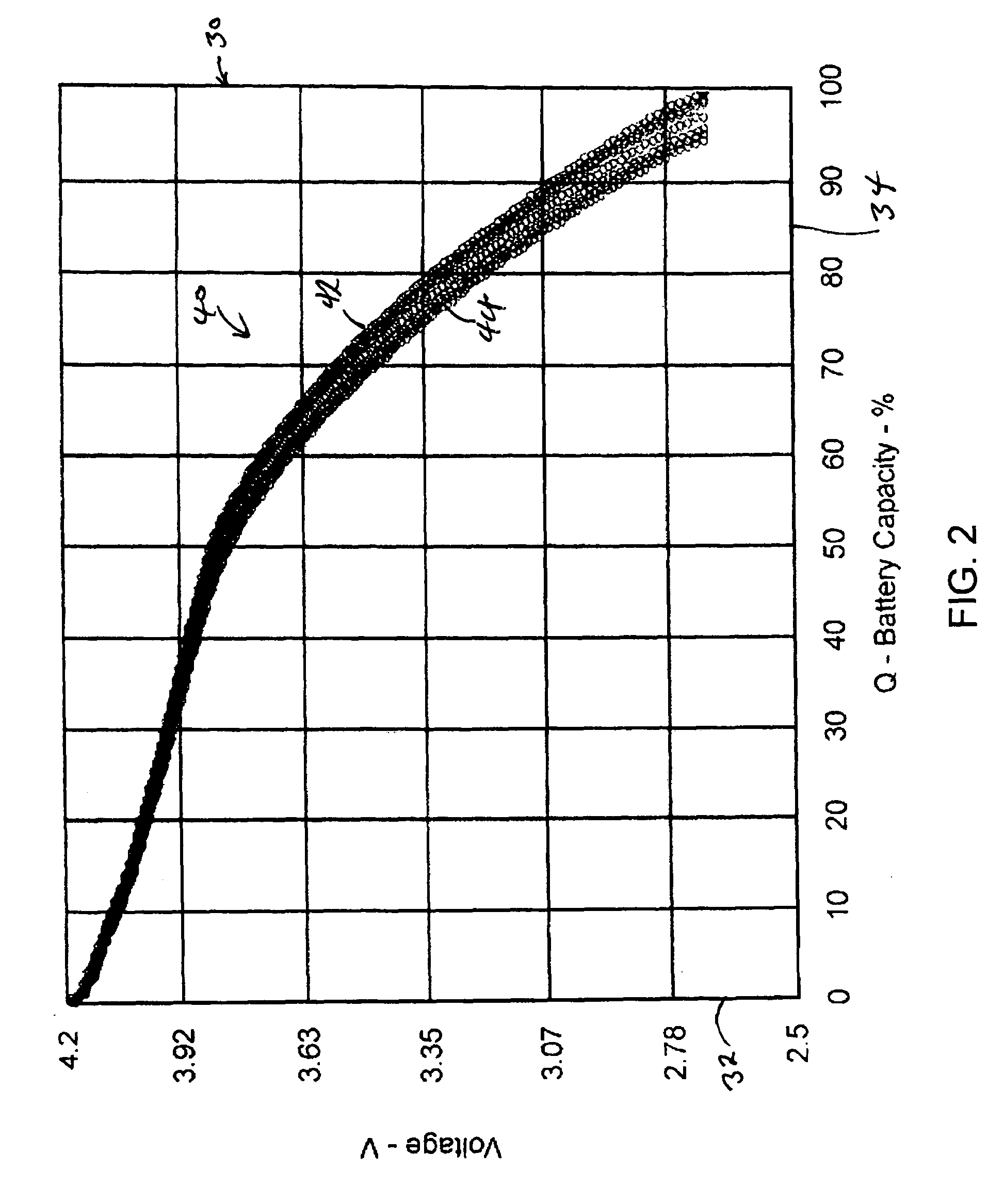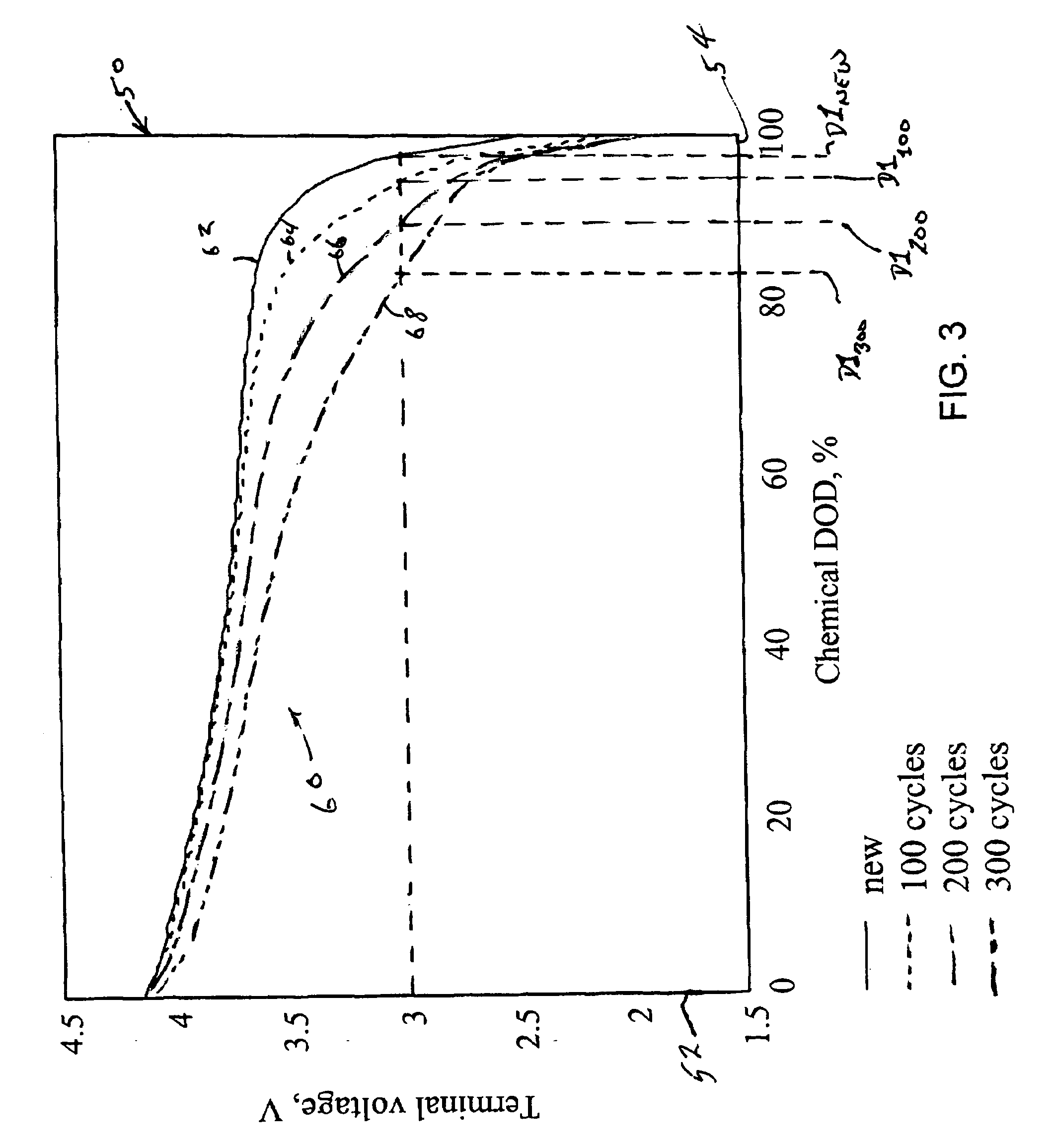Method and apparatus for operating a battery to avoid damage and maximize use of battery capacity
a technology for operating a battery and maximizing which is applied in the direction of electrochemical generators, safety/protection circuits, instruments, etc., can solve the problems of significant amount of battery capacity unused, battery operation may be under-utilized, and battery damage, so as to avoid damage to the battery and maximize the use of the battery capacity.
- Summary
- Abstract
- Description
- Claims
- Application Information
AI Technical Summary
Benefits of technology
Problems solved by technology
Method used
Image
Examples
Embodiment Construction
[0020]FIG. 1 is a graphic representation of internal battery impedance as a function of frequency as the relationship changes with age of a battery. In FIG. 1, a graphic representation 10 indicates data with respect to impedance Z (in Ohms) on a first axis 12 and with respect to frequency (in Hertz, Hz) on a second axis 14. Represented data is arrayed in a plurality of curves 20. Plurality of curves 20 ranges from an early curve 22 representing data from a battery at an early age (i.e., having been subjected to relatively few charge / discharge cycles) to a later curve 24 representing data from the battery at a later age (i.e., having been subjected to a greater number of charge / discharge cycles). One may observe from FIG. 1 that at low frequencies the internal impedance Z of the battery increases as the age of the battery increases. This is a significant result because the battery is commonly employed for providing direct current (DC)—low frequency—power to a supplied device or host ...
PUM
 Login to View More
Login to View More Abstract
Description
Claims
Application Information
 Login to View More
Login to View More - R&D
- Intellectual Property
- Life Sciences
- Materials
- Tech Scout
- Unparalleled Data Quality
- Higher Quality Content
- 60% Fewer Hallucinations
Browse by: Latest US Patents, China's latest patents, Technical Efficacy Thesaurus, Application Domain, Technology Topic, Popular Technical Reports.
© 2025 PatSnap. All rights reserved.Legal|Privacy policy|Modern Slavery Act Transparency Statement|Sitemap|About US| Contact US: help@patsnap.com



